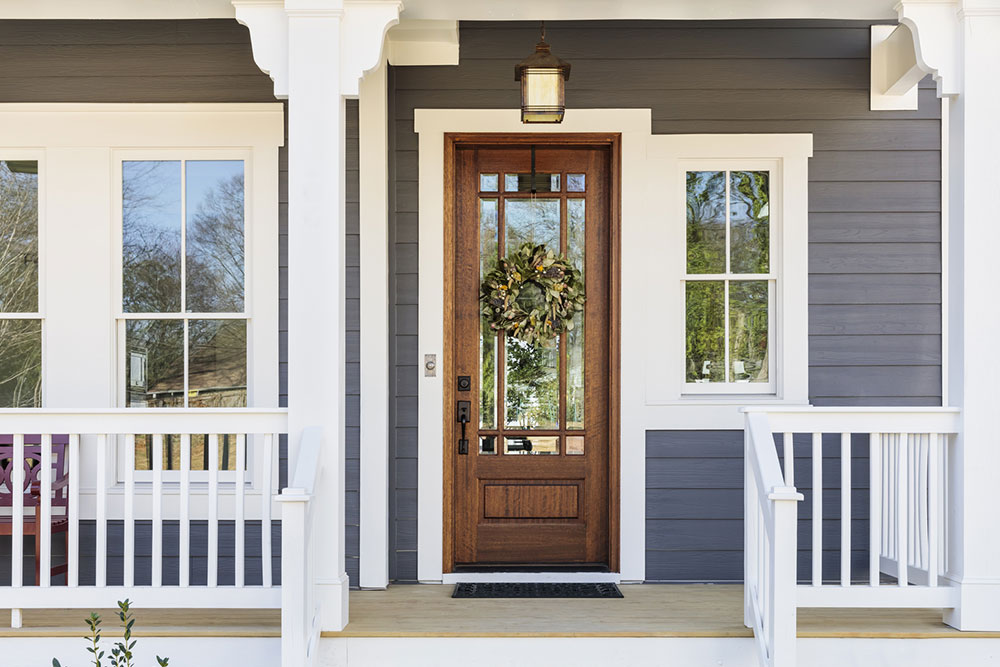4 common mistakes to avoid while choosing a front door for the house

When designing or redecorating their homes, people often focus on the spaces where they spend most of their day. Sometimes, a lot of emphasis is placed on lighting and colors to make a good impression. However, one aspect many overlook is the front door. Choosing the right front door is essential for aesthetics and even safety. Some common mistakes often prevent people from finding the perfect front door for their house.
Picking the wrong material for the door
Homeowners often pick a door based on how it looks. They put a lot of emphasis on aesthetics rather than what the door is made of. Sure, a good-looking door is essential, but it will not be of much help if it is weak and cannot withstand the weather. For instance, if the weather around one’s house is mostly humid, front doors made of wood will not last long. People should pick a door made of materials suitable for the weather conditions that prevail in their location throughout the year. Below are some commonly used materials for front doors:
- Fiberglass
Fiberglass is an excellent material for a front door because it is energy efficient. It helps maintain the temperature inside while giving a contemporary look to the exterior. If a person wants to improve the door’s aesthetics further, they can consider fiberglass that has been stained, reflected, or frosted. These designs also ensure one’s privacy is not compromised. Usually, two types of fiberglass doors are available: solid doors with no glass panels and those fixed up with glass panels. - Wood
Various types of wood have been used for building front doors for years. Wood is the classic choice since it is quite versatile and available in numerous finishes and styles. Another reason that makes wood popular for doors is its durability. However, building and maintaining wooden doors can be expensive. Furthermore, despite its durability, wood can easily succumb to certain types of weather and start to warp, split, or peel off. So, it is definitely not recommended for homes in areas with harsh climate conditions. - Steel
If someone is looking for all-weather, sturdy, and low-maintenance materials for front doors, steel is a good option. Most of the time, steel front doors have an additional layer of foam for energy efficiency. In addition to maintaining the interior temperature, steel is not susceptible to shrinking, warping, and peeling off. It can tolerate some of the harshest weather conditions for years on end.
Choosing a door incompatible with the house’s architectural style
A frequent mistake when picking a front door is not considering the overall architecture of the house. While many homeowners look at the aesthetics of the door itself, they forget to check whether it matches the design of the house. When choosing the front door’s design, material, and make, one must check whether it is compatible with the style and design of the property’s exterior.
The new door should also match the style of the interiors. It should complement the design of the other doors in the house, as this can give the living space a cohesive look.
Not taking into account the door’s energy efficiency
While some people ignore energy efficiency when picking a front door and focus on looks only, others do not know the benefits of getting such a door. An energy-efficient door can greatly elevate the home’s resale value and reduce monthly energy bills.
The market has numerous doors that are tagged energy-efficient, so picking the right one might take some time and effort. Here are two tips for choosing the best option:
- For maximum energy efficiency, pick solid front doors that do not have any glass panels.
- If the house’s internal heating is regulated well, glass entry doors can be a good choice. They can maintain energy efficiency while improving the aesthetics and adding to the resale value.
Not installing the door properly
Picking the right material for the front door is not enough. Even if one chooses a material that can withstand harsh weather conditions, the front door will not last long if installed incorrectly. This can happen if the person installing the door does not have the necessary skills and know-how. Therefore, one should choose the DIY route for front door installation only if they are confident and have some experience. Relying on DIY videos or handbooks may increase the risk of incorrect installation, which means all the money spent on making the door will go to waste.
One should remember that installing a new door on an old structure is quite complex. So, individuals must have the necessary equipment to do the job. Those who do not have the right tools can hire professional installers. Paying a little bit extra to professionals can go a long way in ensuring the front door stays intact for many years. However, many companies help install doors, so it is important to do some research before choosing a service provider. If unsure, one can ask their friends and family members for suggestions and read reviews on the internet. This can take some time, but it ensures one gets quality service.


